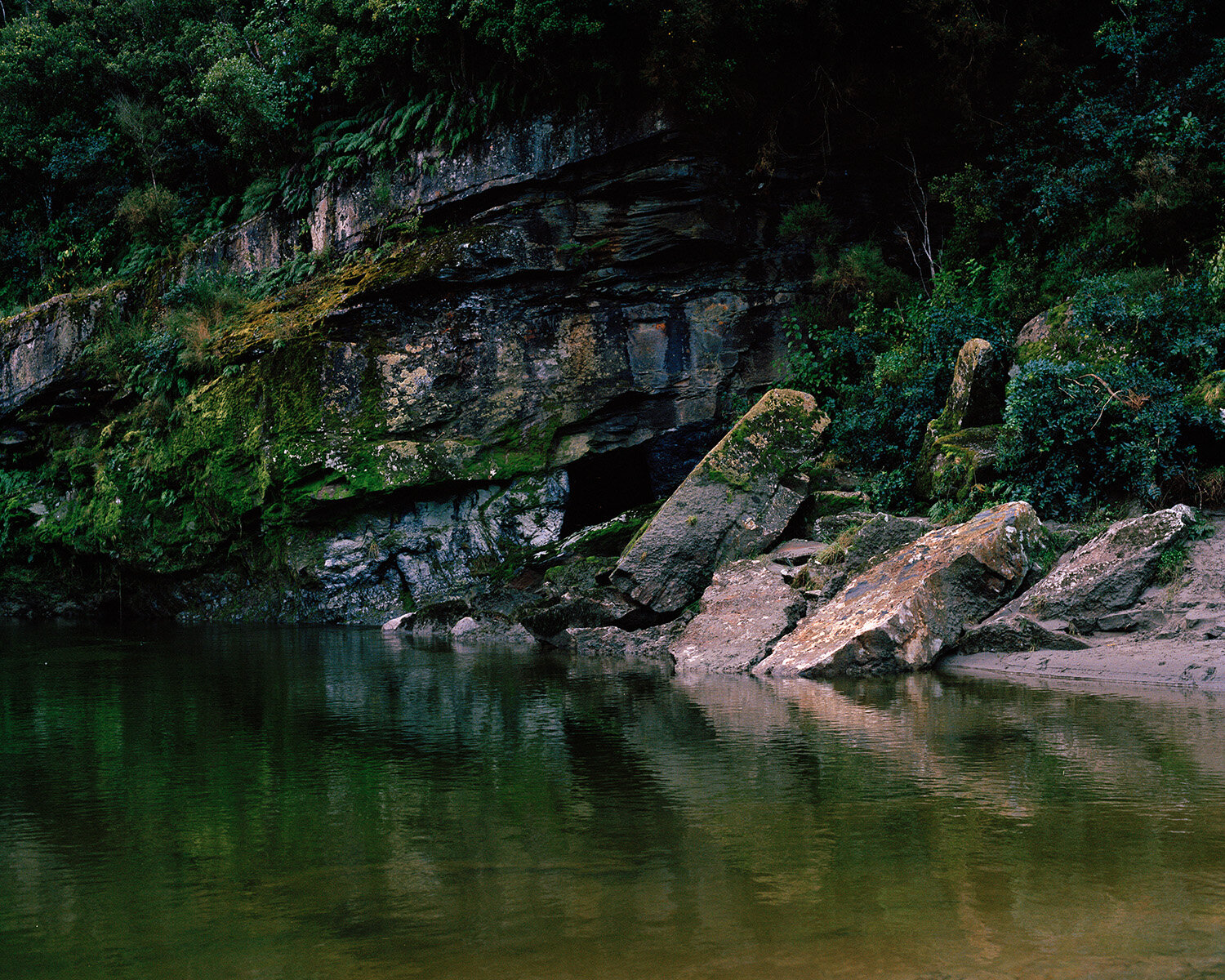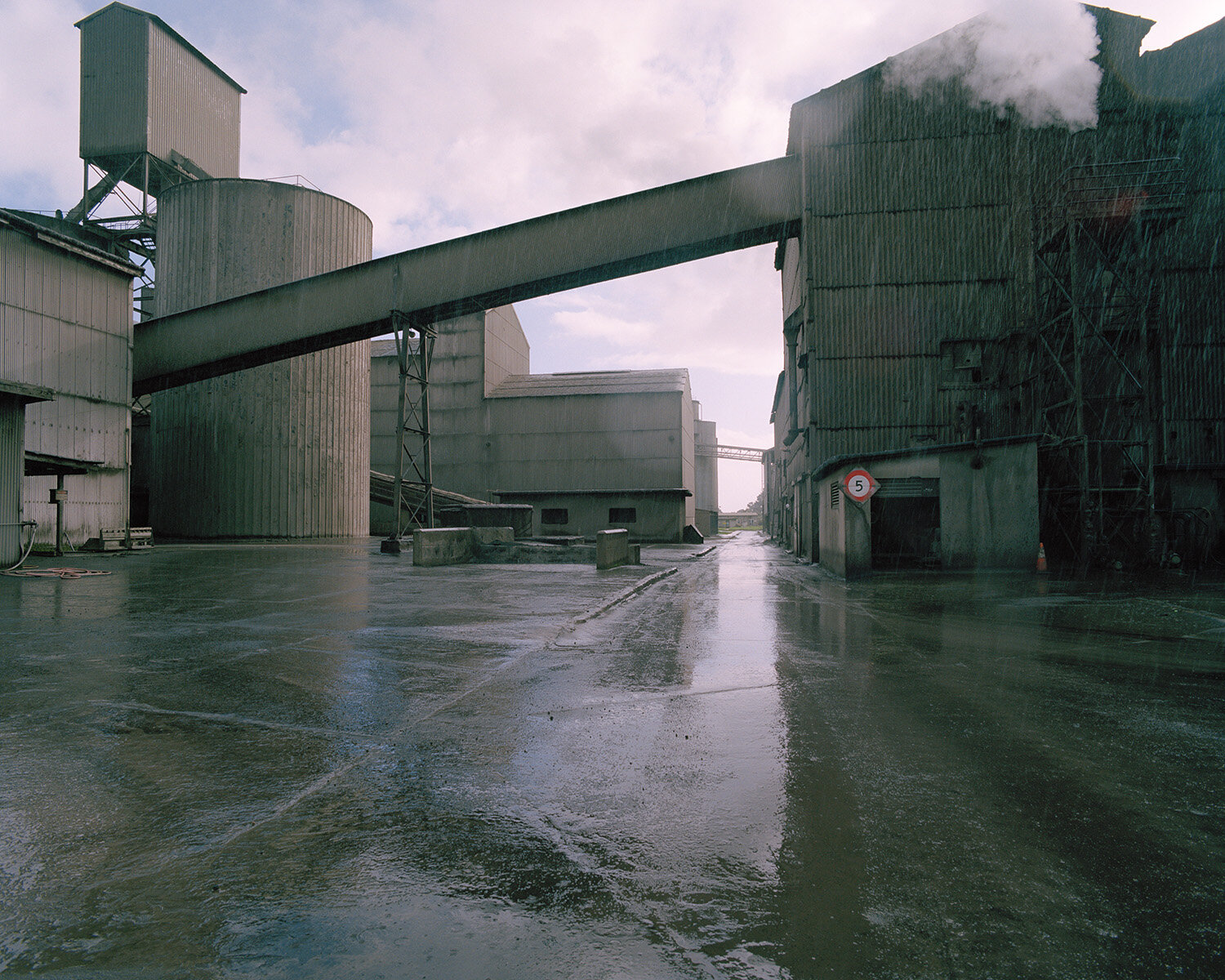Hannah Watkinson - reviewed
The Near Future
Hannah Watkinson
Toi Moroki Centre of Contemporary Art, Christchurch
12 June – 28 August 2021
Reviewed by Melanie Oliver for PhotoForum, July 2021
Publication available from Bad News Books
Review of book by Mary Macpherson in Landfall Online
Hannah Watkinson, Brunner mine site entrance, Grey River, 2015
A mossy rock overhang, pool stream and dense foliage disguise the entrance to the Brunner mine, an early industrial site remembered for the worst mining disaster in New Zealand’s history, when in 1896 an explosion killed 65 miners. It is stories like these that earned the West Coast of Te Waipounamu a reputation for being dangerous, as well as wild weathered and working class. A significant place for Māori as a resource of pounamu, from the 1860s the area attracted waves of miners who tried their luck at extracting wealth from the earth, first gold, then coal, living in small towns along this rugged coastline and inland, closer to the mines. To outsiders, the weather forecast usually predicts rain.
The Near Future is an extensive body of work from Ōtautahi photographer Hannah Watkinson that reveals a more nuanced and complex perspective of the region. Each of the 21 photographs closely observes the whenua, vernacular architecture and signs of defunct industry, offering glimpses into the ethos of the local community, its layered histories and potential future. Watkinson takes us along less travelled roads, to mine entrances and memorials, sites of abandon and pockets of sustained life, capturing along the way signs that point towards the threat of climate change, a slower form of disaster that looms large for coastal areas.
Hannah Watkinson, Holcim Cement plant in rain, Cape Foulwind, 2016
Watkinson made The Near Future series over a six year period, from 2015 to 2021, exploring the key elements and environment of the Westport area. Trying to capture the slow creep of coastal erosion, the rising sea levels and alterations to the land brought about by global warming, as well as the impact this might have on vulnerable coastal communities, is a difficult task. In attempting to do so, Watkinson has been driven to pay thoughtful attention to the land and sea, and so avoids romanticism or cliché. The foreboding skies, misty mountains and lush bush are still present, but her treatment of each photographic site focuses on what it might mean to live here, rather than simply visit; small details and adaptations that are unique to this place. The extended period of time that Watkinson spent researching, taking and hand processing these photographs has led to a deep level of engagement and the passing of seasons is visible across the works. Together they imply that impending change is fast on the way.
Hannah Watkinson, Pike River mine signage, Atarau, 2020
Each work relays a familiar West Coast narrative, from coal mining tragedies to the recent Holcim Cement plant closure. Workers in these industries and their families have not only led notoriously hard lives, but for some there has been significant sacrifice. Watkinson recalls this gently, documenting only the entrances to the Brunner and Pike River mines and the vast, empty cement factory. In Pike River mine signage, notes of protest and advocacy around the disaster are pasted over the official signage, giving voice to those who were affected: ‘#StandWithPike’, ‘The Whole World is Watching’. Collectively these photographs convey different forms of loss and departure, evoking an emotional response and understanding.
Hannah Watkinson, Miner's Hall, Runanga, 2015
Even though the workers themselves are absent, the sociopolitical context of West Coast employment is salient. After all, it is not far from the Buller District to Blackball, the small mining town made famous for being the heart of New Zealand’s radical workers’ rights movement and the birthplace of the New Zealand Labour Movement. Miner’s Hall, Runanga shows a large community hall that was once a hub of activity. Now with scaffolding up the side showing repairs are underway, it becomes an image hopeful for ongoing community vibrancy. Another work depicts the Coaltown Museum in Westport that is up for sale, acknowledging the attempted shift from mining to tourism and other business models for this part of the coast. We are made aware how much the economic and social conditions of the area have altered; how waves of industry left these communities in a state of flux and unemployment.
Hannah Watkinson, Ray White for sale sign, Coaltown Museum, Westport, 2016
The constant absence of people is striking. Watkinson gives prominence to the land rather than built structures, perhaps as a desire to counter the anthropocentric lens of our world and of documentary photography. The encroachment of the sea itself is documented: the seaside tennis courts flooded with water, sea foam washing up over the coastal wall at Granity, and the skate park or basketball court at Carters Beach, nestled right beside the ocean, looks to be the next to succumb to the incoming tide. It’s a long and beautiful drive along this coast but Watkinson warns of the danger for those homes built close to the sea, or even for future generations at the school in Granity.
A number of the works capture minor acts of civilian dissent, a bit of graffiti, a derelict car, global warming protest artwork or even an artfully decorated fence; gestures that are playful and I assume typical of West Coast attitudes. I wonder what the locals would make of these photographs; whether these are the places and views they would like to be known for, since there is always a question of representation and identity within photography. Yet Watkinson has respectfully captured moments of beauty, of humour and the everyday, that speak volumes of this place without claiming it and that allow for subjectivity and agency. The exhibition gives generous insight and the forthcoming publication with these photographs and additional content promises to elaborate more fully the stories and complexity of this area.
Hannah Watkinson, Six months, Tennis court, Carters Beach (1 of 3), 2020
The ever present natural world reinforces the Indigenous history implicit in these photos, one that precedes colonisation by Charles Buller and the New Zealand Company. The ngahere is deep green, the coastal horizon breathtaking, and it is easy to see the lure of living in this isolated part of the motu. In the last and largest work in the exhibition, a yellow road sign points toward a ‘Large Matai Tree’ on the Karamea Highway, a simple arrow towards the bush where this mighty Matai grows. Watkinson’s photographs are often taken in out of the way places, near to or adjacent with their subject. These are quiet places, literally entry points or thresholds. Watkinson is thus similarly making signs that point towards features and futures we might otherwise overlook, encouraging us to slow down and contemplate the next moment, that which is just out of frame.
Melanie Oliver is a curator at Christchurch Art Gallery Te Puna o Waiwhetū. She is also a PhD candidate in curatorial practice at Monash University.
We need your help to continue providing a year-round programme of online reviews, interviews, portfolios, videos and listings that is free for everyone to access. We’d also like to dream bigger with the services we offer to photographers and the visual arts.
We’ve partnered with Press Patron to give readers the opportunity to support PhotoForum Online.
Every donation helps!






